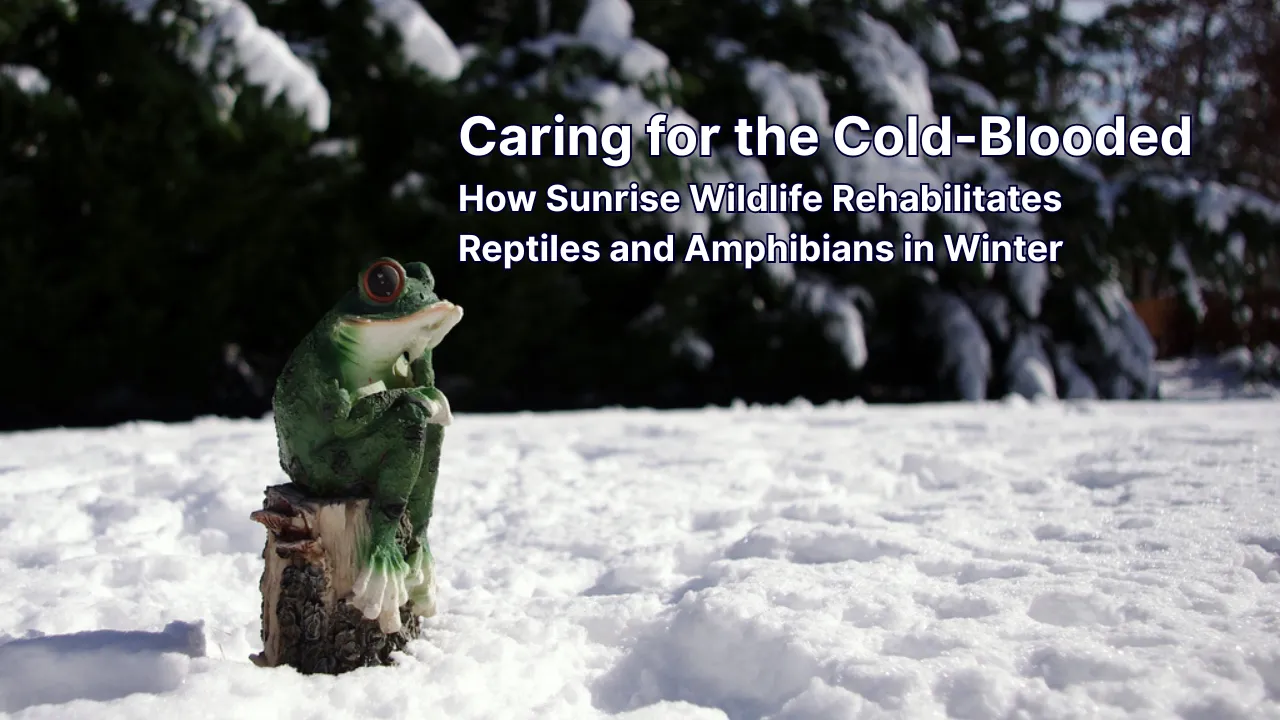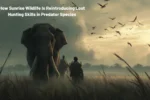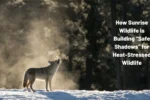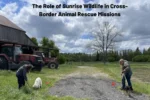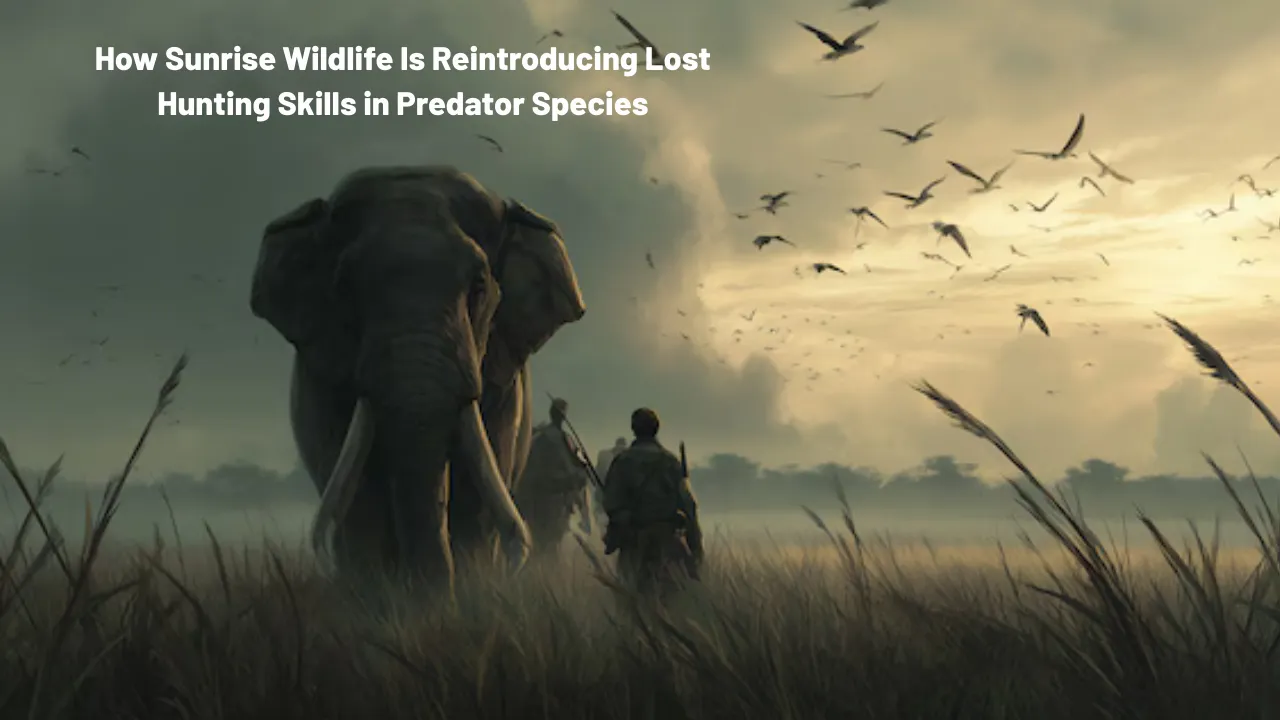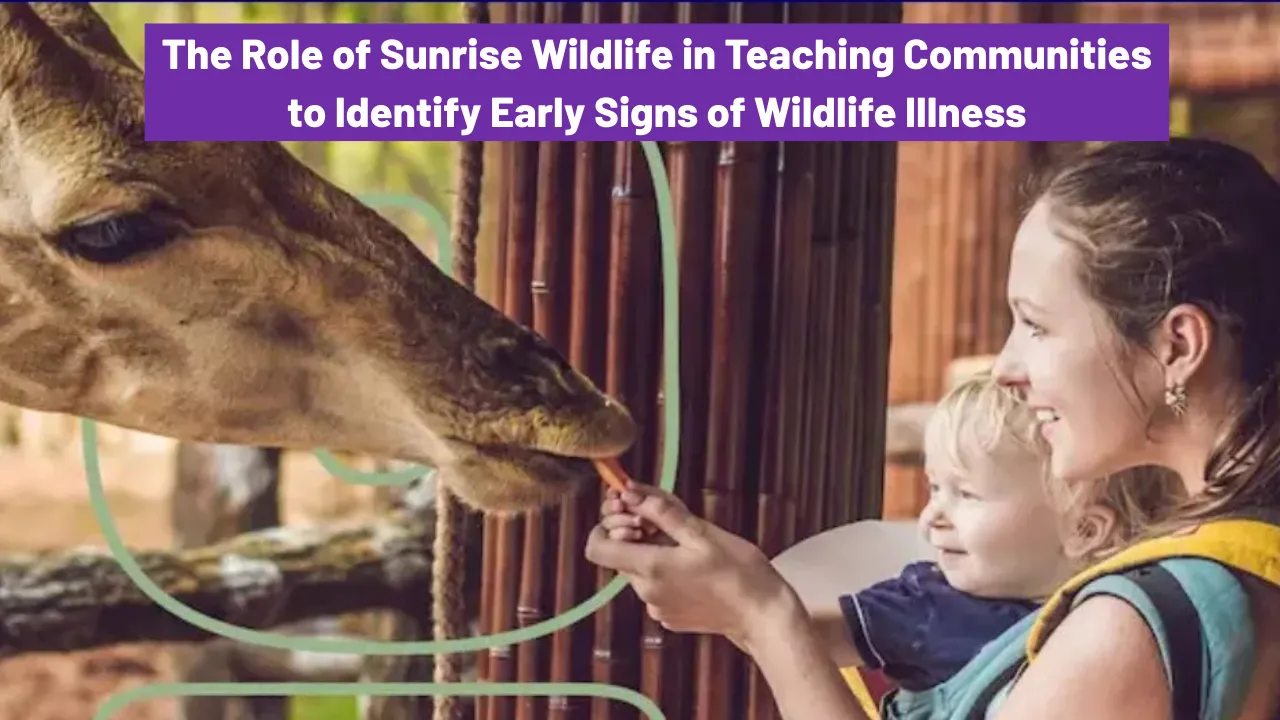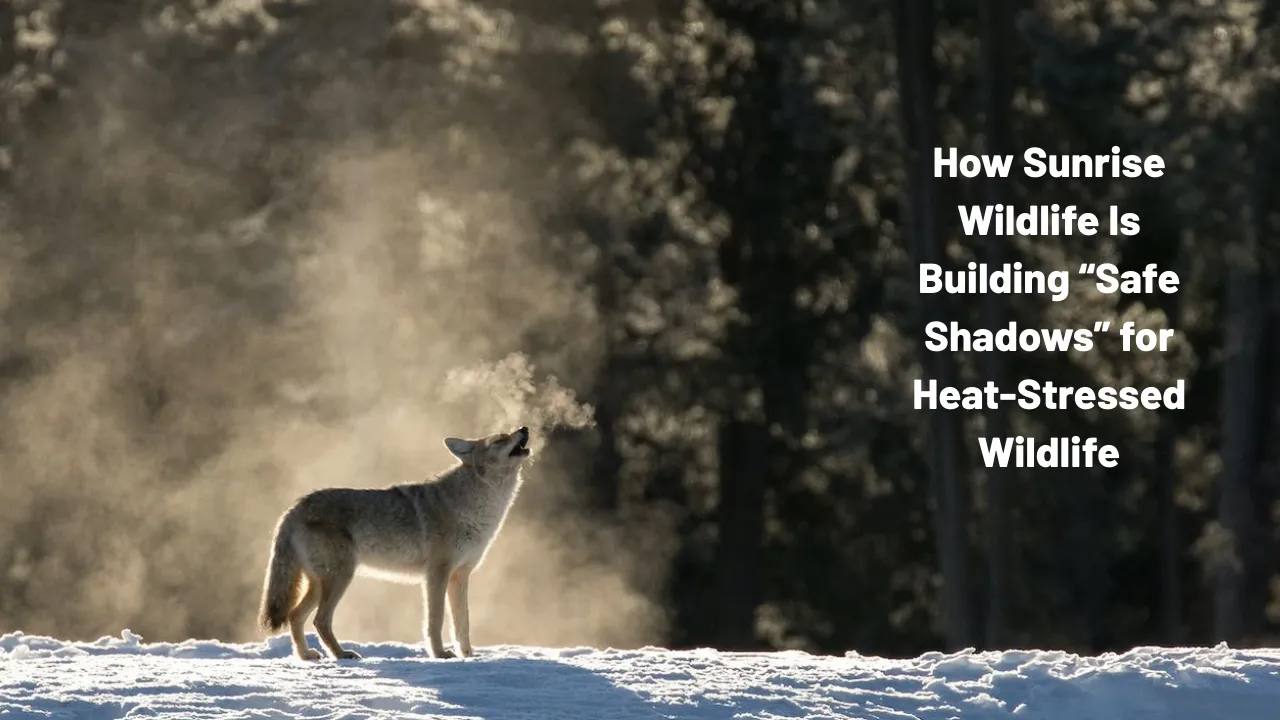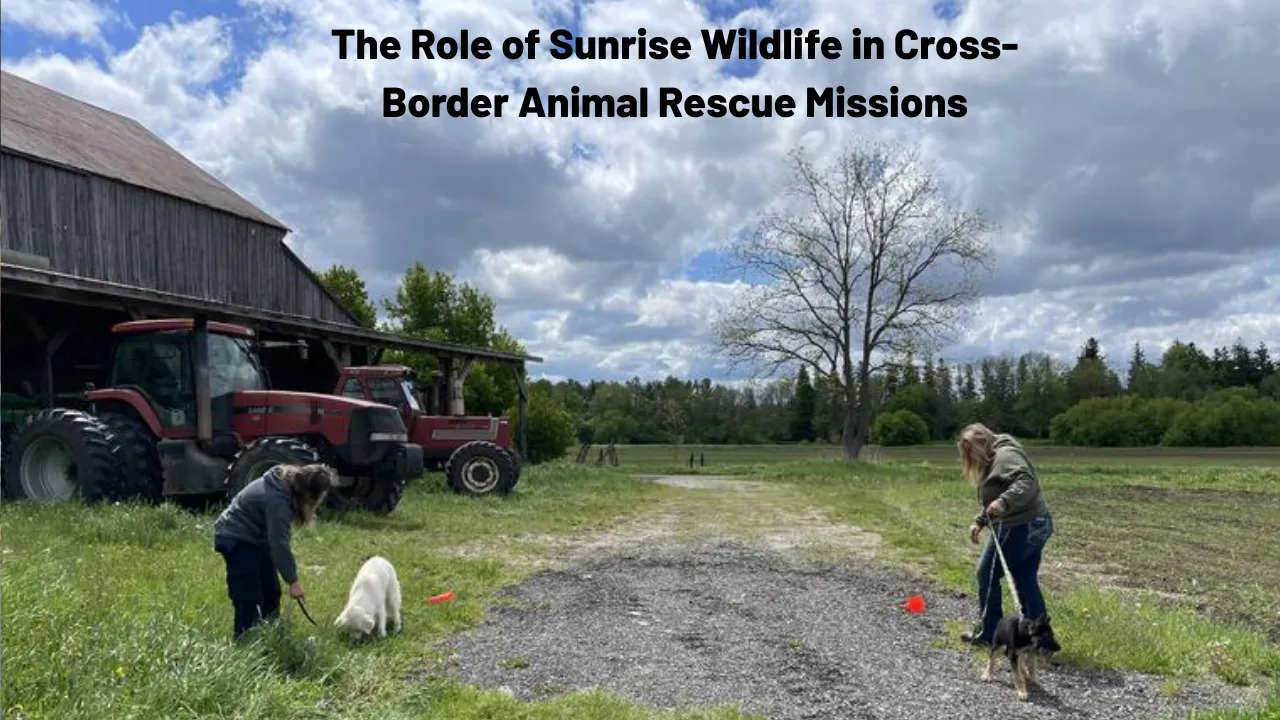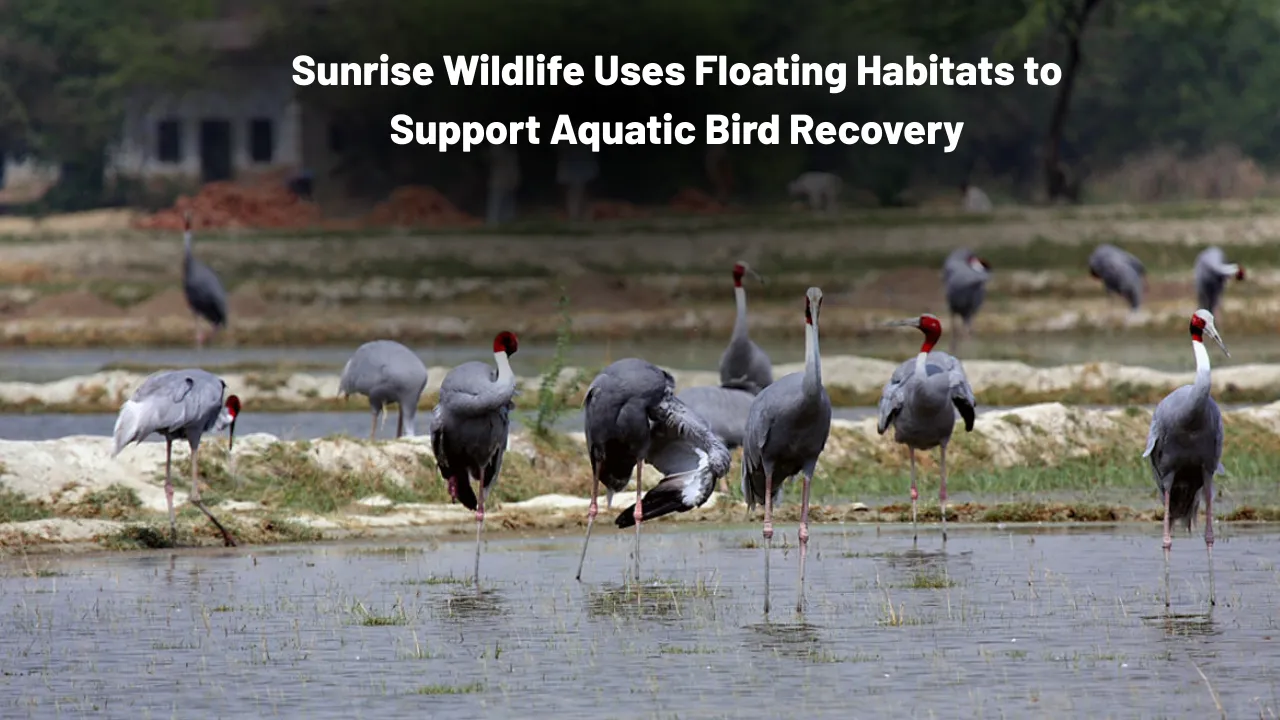Caring for the Cold-Blooded: Caring for the Cold-Blooded becomes increasingly vital when winter arrives and temperatures drop below levels that reptiles and amphibians can tolerate. These animals, unable to generate internal heat, are entirely at the mercy of their environment. When their natural hibernation patterns are disrupted, many find themselves injured, disoriented, or even dying without intervention.
This article sheds light on the extraordinary efforts of Sunrise Wildlife, a wildlife rehab center that specializes in winter animal care. You’ll discover how their team navigates the complex and delicate process of reptile rehabilitation and amphibian rescue, especially in the colder months when these creatures are at their most vulnerable. We’ll explore their methods, challenges, and the powerful impact they have on these often-overlooked species.
Caring for the Cold-Blooded: A Vital Mission in Winter
Sunrise Wildlife’s mission in caring for the cold-blooded takes center stage when temperatures begin to plummet. Unlike mammals, reptiles and amphibians can’t warm themselves. In natural settings, they retreat into burrows or ponds to enter brumation, a dormant state like hibernation. However, habitat loss, road accidents, and human interference often prevent them from finding safe shelter. That’s when Sunrise Wildlife steps in with expert care, custom-built winter enclosures, and specialized veterinary treatment. Their approach combines compassion with science, making them a model in the field of reptile rehabilitation and amphibian rescue during the most life-threatening time of year.
Overview of Sunrise Wildlife Winter Care Techniques
| Care Aspect | Description |
| Climate Control | Heated enclosures, UV lighting, humidity regulation |
| Nutrition Plans | Seasonal feeding strategies with vitamin-rich diets |
| Medical Treatment | Respiratory infection care, wound healing, parasite control |
| Observation & Quarantine | Isolated recovery areas to avoid cross-contamination |
| Public Education | Community outreach and cold weather wildlife care awareness |
Why Cold-Blooded Creatures Need Special Winter Care
Cold-blooded animals such as turtles, frogs, snakes, and salamanders cannot function in freezing temperatures. In nature, they find shelter underground, under rocks, or submerged in mud to slow their metabolism and survive the cold months. This process, known as brumation, is not always an option for animals affected by urban sprawl, sudden temperature drops, or pollution.
Sunrise Wildlife’s role in winter animal care involves stepping in when the natural system fails. Injured reptiles and disoriented amphibians brought to the center are given stable, warm environments where they can slowly recover. Unlike other wildlife, these species require highly specific conditions to survive — temperature, moisture, light exposure, and even seasonal feeding patterns must be carefully managed. Their survival depends on consistency and patience, and the Sunrise team is trained to provide both.
Sunrise Wildlife’s Specialized Winter Setup
One of the most challenging yet rewarding parts of caring for the cold-blooded is recreating conditions that mimic nature, but under human control. Sunrise Wildlife does this by using:
- Climate-controlled enclosures: Each species is given its ideal temperature and humidity levels. Frogs and salamanders get cool, damp areas, while snakes and turtles often need drier warmth.
- UVB lighting systems: These simulate natural sunlight and are essential for vitamin D production and calcium absorption in reptiles.
- Basking and hiding spots: Enclosures are designed with both heat zones and shelter areas, allowing animals to regulate their body temperature at will.
- Enclosure enrichment: Natural items like moss, bark, rocks, and shallow water dishes help reduce stress and mimic wild environments.
Every detail matters in this kind of reptile hibernation care, and it’s only through such attention to detail that Sunrise Wildlife can help these animals survive and thrive until spring.
Common Injuries and Conditions During Winter
Many reptiles and amphibians brought in during winter suffer from serious health issues. Sunrise Wildlife is equipped to handle a variety of problems including:
- Respiratory infections from prolonged exposure to damp, cold environments
- Dehydration due to ice-covered water sources or being unable to reach moist shelters
- Injuries from yard tools, vehicle strikes, or frostbite
- Nutritional deficiencies from lack of prey or improper brumation
In these cases, animals receive immediate evaluation by veterinary staff. Treatments may include rehydration fluids, wound care, antibiotics, and controlled warming. Every case is documented, and progress is monitored carefully to avoid overstressing the animal.
Key Winter Rehab Techniques at Sunrise Wildlife
The core strategies that define cold-blooded animal care at Sunrise Wildlife during winter include:
- Controlled Heating and Lighting
Heat pads, ceramic lamps, and UVB bulbs maintain optimal temperatures without risking overheating. - Tailored Feeding Programs
Animals in partial brumation eat less, but still require key nutrients. The team provides appropriate, species-specific diets such as gut-loaded insects, leafy greens, or amphibian-safe supplements. - Isolation and Monitoring
New arrivals are quarantined for observation. This helps identify contagious diseases and reduces stress on long-term residents. - Gentle Handling and Stress Reduction
Reptiles and amphibians are handled minimally to avoid metabolic stress. Recovery times are extended when needed.
These methods create the best possible chance for recovery and eventual release, especially for species under threat from environmental pressures.
List of Reptiles and Amphibians Commonly Rehabilitated
- Snapping turtles
- Eastern box turtles
- Garter snakes
- Leopard frogs
- Green frogs
- Painted turtles
- American toads
- Red-spotted newts
Each of these animals has different environmental needs and vulnerabilities. For example, turtles often suffer from cracked shells due to freezing, while amphibians may go into brumation too early if temperatures fluctuate. The Sunrise Wildlife team is trained to understand the biology of each species and apply amphibian rescue techniques with precision.
Public Awareness and Support
Sunrise Wildlife is not just a rehab facility. It’s also a hub for education. They offer outreach programs to inform the public about cold weather wildlife care, including how to identify when an animal needs help and how to avoid unintentionally harming overwintering reptiles and amphibians.
This education is vital. When people understand that a turtle in their backyard isn’t necessarily dead — just brumating — or that a frog under the leaves needs to be left undisturbed, they become part of the solution. Community members also volunteer, donate, or spread the word, all of which supports the center’s growing impact.
How You Can Help
You don’t need to be a wildlife expert to contribute to the success of cold-blooded animal care in your community. Here’s how you can assist:
- Provide backyard shelter: Leave leaf piles, logs, and natural debris for hibernating animals.
- Avoid disturbing overwintering sites: Limit landscaping or digging during colder months.
- Contact a rehab center: If you find a cold, unmoving reptile or amphibian, reach out to a local center instead of assuming it’s dead.
- Donate or volunteer: Wildlife centers always need funds, supplies, and helping hands.
Every effort adds up and could mean the difference between life and death for these delicate creatures.
FAQs
What does “cold-blooded” mean exactly?
It means animals like reptiles and amphibians can’t produce their own body heat. Their internal temperature changes with the environment.
Why do reptiles and amphibians need help in winter?
Urbanization and unpredictable weather often prevent them from finding safe places to brumate. Some are injured or exposed and can’t survive without help.
How does Sunrise Wildlife keep these animals warm?
They use custom enclosures with heaters, UV lights, and insulation to mimic natural environments.
Is it okay to touch a cold reptile I find in the wild?
Only if it’s clearly injured or in danger. Otherwise, it’s best to contact a rehab center and follow their advice.
Can all reptiles and amphibians survive brumation?
Not always. Sick, injured, or young animals may not survive on their own. That’s why rehab centers are critical in the winter months.
Final Thought
Caring for the Cold-Blooded isn’t just about animal rescue — it’s about preserving fragile ecosystems, fostering empathy, and standing up for those who can’t ask for help. Sunrise Wildlife shows that dedicated, informed action can protect the most vulnerable among us, even in the harshest seasons. If this mission speaks to you, support your local wildlife rehab center, educate others, or simply be a little more mindful when winter sets in. And if you’re curious about your natural instincts, explore your horoscope or dive into more wildlife insights here on our platform.
